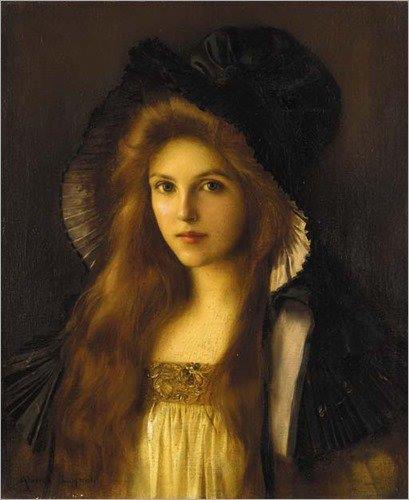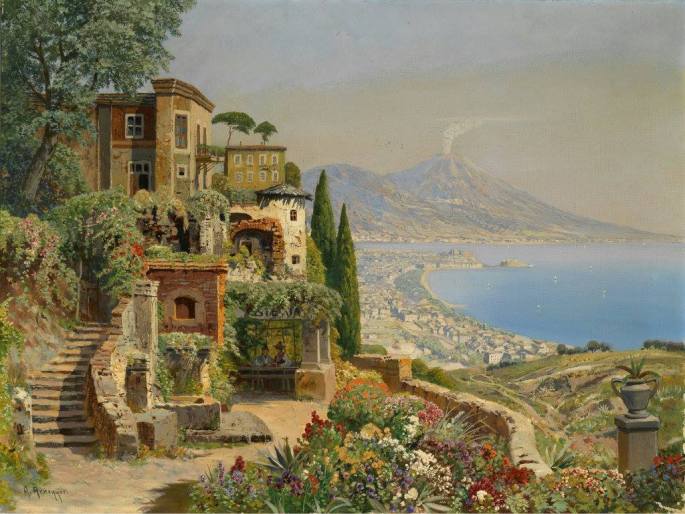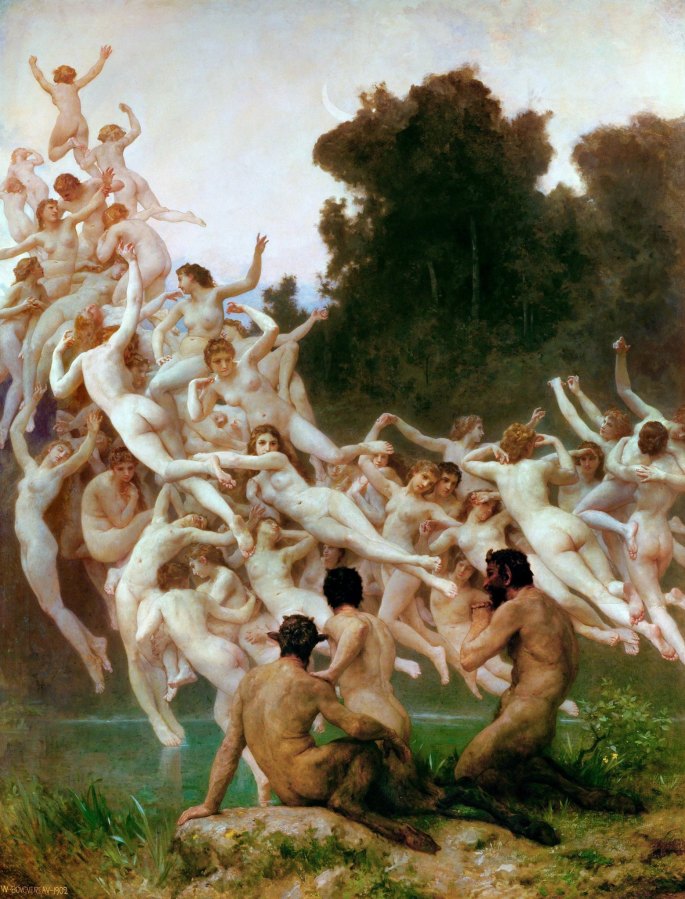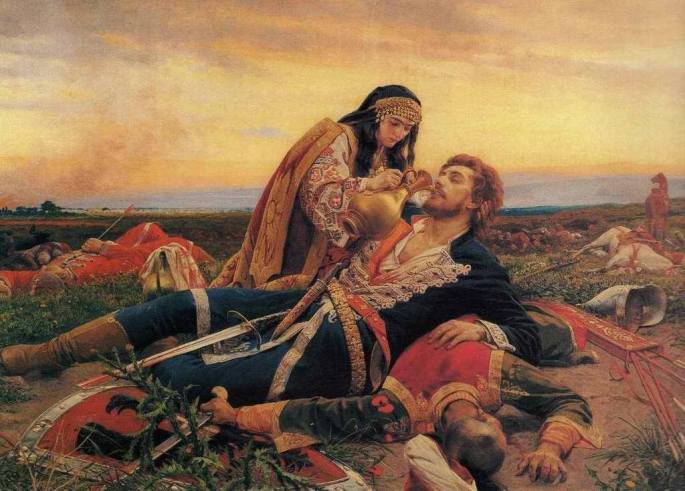“Moral cowardice is fear of upholding the good because it is good, and fear of opposing the evil because it is evil.”—Ayn Rand.
Recently, following a haphazard and non-linear path of investigation and enquiry, my reading took me to the distant and taboo realm of Hitler’s Third Reich.
Having read some of Madison Grant’s works and recently listened to ‘The Myth‘ by Alfred Rosenberg, I feel that I am somewhat familiar now with the philosophy that lay behind the Nazi’s political machine. These books were held to be seminal works in the Nazi canon and influenced Hitler’s wider worldview, as well as his economic and political belief structure. It therefore proved an interesting read when I stumbled across the Wikipedia entry on “Art of the Third Reich”.
As one would expect, the tone of the Wikipedia entry is generally critical and dismissive, and its emphasis lies predominantly on the fact that Hitler’s policy towards art undermined that which is the holiest of modern-day values in the West, ‘freedom’. More precisely, Hitler’s artistic policy is framed as having been direct state intervention into what in modernity has always existed in an anarchistic state, a condition considered to be sacrosanct by artists the world over. Freedom in essence, and as defined in its modern context, begins and ends in the free expression of individuals in their artwork, whether that be music, fine art, or literature.
However, what is little known by the public is that Hitler’s party came into power at a time of utter and unimaginable crisis in Germany. This is briefly alluded to at the beginning of the Wikipedia post, but is just as quickly dismissed as ‘conservative’ and ‘propaganda’.
“The Nazis viewed the culture of the Weimar period with disgust. Their response stemmed partly from conservative aesthetics and partly from their determination to use culture as propaganda.”
National socialism wasn’t, of course, merely a political revolution, but more so it was a cultural one. Underpinning all of the Nazi’s efforts was a ‘noble’ or ‘heroic’ fight for decency against what the Allied victors have after-the-fact labelled as “degeneracy”, but what was, in actual fact, the suffering, impoverishment, and desperation of the German people. The Nazi stance was not just some abstract disagreement over artistic principles, though it did partially manifest in those terms, but a matter of life and death for many suffering German citizens. During the Weimar period, referenced above, Berlin was hailed widely as the European capital of hedonism; it was a place to which the rich and privileged classes of the globe flocked to frolic with German prostitutes at exasperatingly low rates, and to indulge in all manner of narcotics and morally questionable practices.
This moral depravity of the pre-nazi period resulted in an art and culture that was far from being a conscious and healthy choice of the German people. Rather than being rooted in ideals or values, it often represented crude or overt expressions of a common and widespread existential angst. This angst was the personal crisis of the atomised people, a raging discontent that seethed just beneath the fragile veneer of civilised society, at the chaos and squalor of the urban slums, the commodification and normalisation of sexual perversion, and the psychological abyss that confronted downtrodden citizens on an almost daily basis. The humiliating state of affairs was fuelled and perpetuated by the very real economic desperation that the majority of German nationals faced. Young males committed suicide at record rates during the Weimar era and young boys and girls took to the streets, selling their bodies, dirtying their conscience, and dashing any chance of normal eudaemonic family life out of desperation and out of a basic, animalistic will to survive.
Hitler and his fellow nationalists viewed the state of affairs in Berlin from Munich, a relative safe haven of conservatism at the time that had remained largely unravaged by the debauchery flourishing in the capital. Though in the opening paragraph Hitler’s intervention in the country’s art community is compared directly to that of Stalin, the nationalists viewed communism to be part-and-parcel of the moral depravity gripping the capital, and indeed Berlin was majority communist at the time.
In contrast to Stalin’s motives, which centred around control and conformism, the Nazi party’s goals in regulating the country’s artwork were not intended to brainwash the citizenry into subservience. Rather, if one familiarises oneself with the racial, nationalistic, and traditional pillars of Nazi thought, it becomes apparent that they were an attempt to return objective standards and value to artwork, and to direct once more human endeavour towards the constructive, the skilled, the aesthetic, and to immortal principles such as tradition and honour. To state it bluntly, artwork, as the reflection of man and his society, was to be elevated to its pinnacle, and pessimism, nihilism, and hedonism, which had come to be celebrated by the modern artists of the day and which ever aspire to drag man down to the animal, were to be denounced.
By propagating the theory of degenerate art, the Nazis combined their anti-Semitism with their drive to control the culture, thus consolidating public support for both campaigns. Their efforts in this regard were unquestionably aided by a popular hostility to Modernism that predated their movement. The view that such art had reflected Germany’s condition and moral bankruptcy was widespread, and many artists acted in a manner to overtly undermine or challenge popular values and morality.
Wikipedia in typical form manages to drain any meaning from the movement, whilst providing readers with some vestige, or hollow framework, of the truth. To elaborate on my point, here are some examples of modern art in the Weimar era preceding the rise of Hitler. Notice the themes, but also the simple, dirty, cluttered styles employed:
And here, for contrast, are some examples of art that occurred under and were inspired by the Nazi regime:
The difference ought to be clear, and stark. In the former is a darkness, a disjointedness, and a separation, both in terms of style and content, with reality. There is immorality and perversion suggested in every picture. In the latter, there is purity, optimism, a sense of value, strength, and honour. There is a sense of pride and of the “lightness of being”. A glory in life and above all a value in life. The message that Nazi Germany wanted to portray is abundantly clear; that life is good, man is noble, and happiness is our right.
I would like to close this piece by referring briefly to the state of contemporary art in modern Britain and indeed the rest of the Western world. I think that at their core my philosophic principles still revolve around those laid out in Ayn Rand’s objectivism, though I find that my view of what Rand referred to as ‘rational self interest’ widens by the day. Rand was a famous proponent of the need for romanticism in art and literature, and phrased her position thusly:
Art fulfills this need: by means of a selective re-creation, it concretizes man’s fundamental view of himself and of existence. It tells man, in effect, which aspects of his experience are to be regarded as essential, significant, important.
I am inclined to agree, with both Rand and with Hitler. Once one has adopted as a frame of reference a set of standards with which to judge reality (and thus the craft and advocations of art), it should appear obvious to any sane individual of good ethical judgement that modern art is afflicted today by the same ailments that afflicted Germany prior to Hitler’s revolution. Doubt, insecurity, immorality, and above all a resounding senselessness and emptiness define much of the contents of modern art museums. I would like to leave you, dear reader, with a youtube broadcast by the somewhat abrasive Paul Joseph Watson on this subject. Likely due to its accuracy and blunt delivery the video went viral upon its release and garnered a great deal of attention. It summarises the crisis more swiftly and completely than I could hope to accomplish in any written form.
Beauty does exist and it can be portrayed in art. Here are but a few outstanding examples.
Albert Lynch (Peruvian, 1851–1912)

Alois Arnegger

Albert Bierstadt

FRANCESCO GUARDI (1712-1793) Piazza San Marco verso la Basilica

William Bouguereau (1825-1905, French)
The Oreads

Filip Knežević – Kosovo Maiden, Uroš Predić,1919

And with that, adieu my friends.


Beautiful pictures!
LikeLike